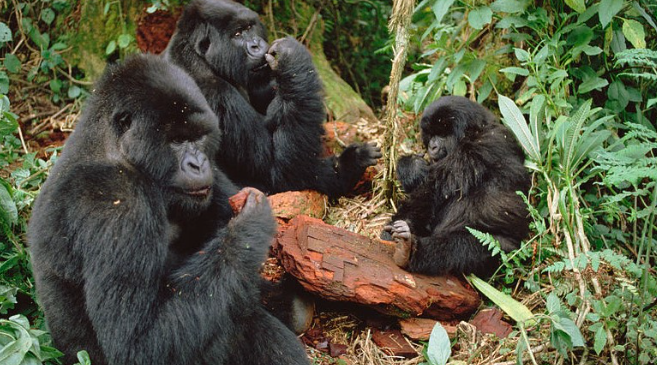How Gorillas Adapt to Food Scarcity
As environmental changes and human encroachment continue to threaten wildlife, understanding how gorillas adapt to food scarcity becomes increasingly important. These magnificent creatures showcase remarkable resilience and resourcefulness, which can inspire conservation efforts and enhance our understanding of biodiversity.
Adapting Eating Habits
When food becomes scarce, gorillas display impressive adaptability in their eating habits. Usually, their diet consists primarily of leaves, stems, and fruits. However, in times of food scarcity, they may shift their focus to different plant materials, such as bark or roots, which they might typically avoid. This flexibility helps them survive in challenging conditions and highlights their ability to utilize available resources effectively. By varying their diets, gorillas not only meet their nutritional needs but also promote plant health through selective feeding, allowing ecosystems to recover.
Changing Social Dynamics
Gorillas also alter their social structures when food is limited. Typically, they live in groups led by a dominant silverback male. However, in times of scarcity, these groups may break apart to reduce competition for food. Smaller groups or solitary individuals can allow for more effective foraging, as there is less competition for available resources. This social flexibility enables gorillas to adapt to their environment while still maintaining the social bonds that are crucial for their survival and well-being.
Utilizing Memory and Knowledge
Gorillas possess impressive cognitive abilities, which they use to navigate food scarcity. Their memory allows them to recall locations of food sources, even if those sources become less abundant due to environmental changes. Through observation, younger gorillas can learn from the older, more experienced members of their groups about which plants are edible and which should be avoided. This transfer of knowledge ensures that future generations are better equipped to face food scarcity challenges, further enhancing their chances of survival.
Conclusion
The ways in which gorillas adapt to food scarcity demonstrate their resilience and intelligence. These adaptations not only enable them to survive in challenging conditions but also highlight the intricate balance of ecosystems. Learning more about gorillas and their behaviors can inspire a deeper appreciation for nature and emphasize the need for conservation efforts to protect their habitats. By supporting gorilla conservation initiatives, we can help ensure that these incredible creatures continue to thrive in the wild.

